Hubble Space Telescope
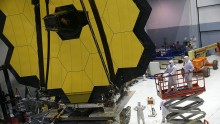
James Webb Space Telescope: NASA’s New Hubble Space Telescope is the Giant Leap in Exploring the Universe
| Theena Ocay | | Nov 08, 2016 10:07 PM EST |
For two decades of innovative construction and after several setbacks, James Webb Space Telescope (JWST) is finally complete and being prepared to launch in 2018.
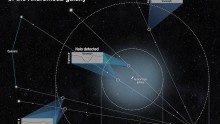
Galaxies 'Waste' Heavy Elements That can Potentially Form Planets
| Ana Verayo | | Jun 07, 2016 07:22 AM EDT |
New data reveals how galaxies are "wasting" heavy elements such as oxygen, carbon and iron by ejecting them into deep space to form halos.
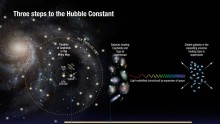
Universe is Expanding at 9% Faster Than Previously Thought
| Ana Verayo | | Jun 03, 2016 07:27 AM EDT |
New data from the Hubble Space Telescope reveals that the universe is expanding more rapidly than previously thought.
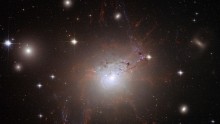
Scientists Say 'Red Geysers' Make Dormant Galaxies
| K. Salugsugan | | May 27, 2016 10:16 AM EDT |
Galaxies have turned into deserts without young stars billions of years ago due to galactic warming. The phenomenon has puzzled astronomers to identify the process that makes the gas in these galaxies too energetic and hot to make stars.
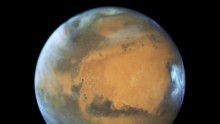
Hubble Captures Biggest, Brightest View of Mars
| Ana Verayo | | May 21, 2016 04:46 AM EDT |
NASA and ESA's Hubble Space Telescope just captured a stunning close-up view of the Red Planet, since Mars is nearing opposition to the Earth and Sun in the upcoming weeks.
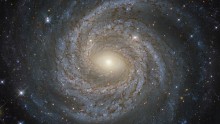
Hubble Captures Perfect Snowflake Galaxy
| Ana Verayo | | May 16, 2016 07:00 AM EDT |
Hubble Space Telescope just spotted a very bright spiral galaxy, resembling a snowflake and emitting powerful X-ray beams.
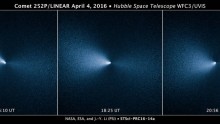
Hubble Captures Spinning Comet From Its Closest Approach of Earth
| Ana Verayo | | May 15, 2016 05:31 AM EDT |
Scientists captured a series of images of the closest celestial object that the Hubble Space Telescope ever captured.
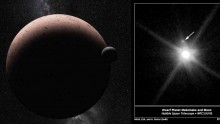
Black Moon of Dwarf Planet Makemake Christened MK2
| Arthur Dominic Villasanta | | Apr 27, 2016 09:24 AM EDT |
What scientists find odd about MK 2 is that it's an extremely dark moon with a reflectivity like charcoal.
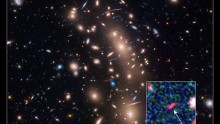
NASA Space Telescopes Detect Faintest Galaxy in the Universe
| Ana Verayo | | Dec 04, 2015 06:41 AM EST |
Scientists have detected the faintest known galaxy in the universe, from a distance of 4 billion light years away.
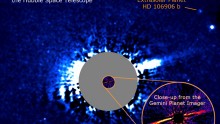
This Planet Got Exiled From Its Solar System 16 Times Farther Than Pluto
| Ana Verayo | | Dec 02, 2015 07:10 AM EST |
Scientists detected an exoplanet that is exiled into the edges of its solar system, 16 times farther than the distance of Pluto from our sun.
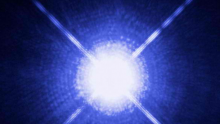
Astronomers Discover Heartbeats of Stars in Messier 87
| Daphne Planca | | Nov 18, 2015 10:40 PM EST |
A team of astronomers has discovered red stars with heartbeats in Messier 87 and made use of it to determine the galaxy's age.
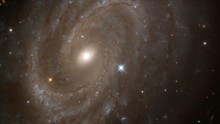
From the Big Bang to a Whimper: Scientists Confirm the Universe is Slowly Fading Away
| Benjie Batanes | | Aug 12, 2015 07:41 AM EDT |
An astronomical study presented in Hawaii on Monday confirmed that the universe is slowly fading away by comparing the amount of energy present during its early years against the current time line.
NASA’s Hubble Finds Massive Halo Around Andromeda, Reveals How Galaxies Are Born
| L. P. Cabasag | | May 11, 2015 06:31 PM EDT |
A massive gaseous halo around the Andromeda Galaxy has been discovered by a group of scientists using NASA's Hubble Space Telescope, a discovery that will answer scientists about the giant spiral galaxies and its evolution and structure such as the Milky Way Galaxy and the Andromeda Galaxy.

Astronomers Discover Andromeda's Massive Gas Halo, Which Extends Near the Earth
| Marco Foronda | | May 10, 2015 11:05 PM EDT |
Astronomers discover a massive gas halo around Andromeda and is noted to extend near the Earth.

Andromeda Galaxy's Ghostly Halo is 1000 Times Bigger Invading Milky Way Galaxy
| Ana Verayo | | May 08, 2015 11:00 AM EDT |
Using the Hubble Space Telescope's observations, scientists revealed that Andromeda's mysterious halo is apparently much larger than first thought.
Subscribe to CHINATOPIX !
Sign up for our free weekly newsletter for the latest in-depth coverage!
EDITOR'S PICKS
-

Did the Trump administration just announce plans for a trade war with ‘hostile’ China and Russia?
-

US Senate passes Taiwan travel bill slammed by China
-

As Yan Sihong’s family grieves, here are other Chinese students who went missing abroad. Some have never been found
-

Beijing blasts Western critics who ‘smear China’ with the term sharp power
-

China Envoy Seeks to Defuse Tensions With U.S. as a Trade War Brews
-

Singapore's Deputy PM Provides Bitcoin Vote of Confidence Amid China's Blanket Bans
-

China warns investors over risks in overseas virtual currency trading
-

Chinese government most trustworthy: survey
-

Kashima Antlers On Course For Back-To-Back Titles
MOST POPULAR
LATEST NEWS
Zhou Yongkang: China's Former Security Chief Sentenced to Life in Prison

China's former Chief of the Ministry of Public Security, Zhou Yongkang, has been given a life sentence after he was found guilty of abusing his office, bribery and deliberately ... Full Article
TRENDING STORY

China Pork Prices Expected to Stabilize As The Supplies Recover

Elephone P9000 Smartphone is now on Sale on Amazon India

There's a Big Chance Cliffhangers Won't Still Be Resolved When Grey's Anatomy Season 13 Returns

Supreme Court Ruled on Samsung vs Apple Dispute for Patent Infringement

Microsoft Surface Pro 5 Rumors and Release Date: What is the Latest?



